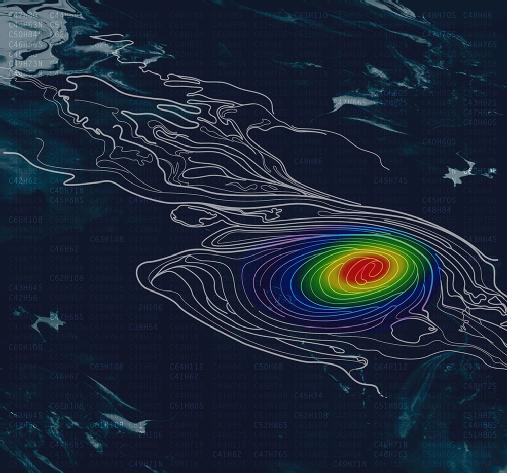Research Image Award for The international Symposium on Energy
Title: “Petroleomics: Petroleum and its molecular fingerprints
Description: Petroleomics is the characterization of petroleum-related samples using mass spectrometry, typically ultrahigh resolution mass spectrometry. The many thousands of components within these complex mixtures can be assigned molecular formulae and, in doing so, "profiles" or "fingerprints" of samples can be established. The profiles are unique to individual samples and can be used to facilitate useful comparisons, such as crude oils of different origins, outputs from differing refining processes, or petroleum samples exposed to environmental influences, amongst other examples. Thus, ultrahigh resolution mass spectrometry is the state-of the-art for characterization of petroleum-related samples, particularly for the heavier fractions where other analytical techniques may not be viable. One of the methods for representing the data is to create a plot of double bond equivalents (DBE) and carbon number for a single heteroatom class (compound class). The image shows an abstract warping of a DBE plot on to an image of an oil surface. A selection of molecular formulae are superimposed on to the image, reminding the viewer that complex molecular compositions form the basis of all petroleum samples.
Pushing the analytical limits: new insights into complex mixtures using mass spectra segments of constant ultrahigh resolving power
Description: Using a combination of custom-designed experimental and data processing methods, a new strategy has been developed for characterization of the most challenging complex mixtures across different fields. A Fourier transform ion cyclotron resonance mass spectrometer (FT-ICR MS) operating at constant ultrahigh resolution (“OCULAR”) was used to successfully characterize a non-distillable petroleum fraction without the aid of chromatography or dissociation experiments. A resolving power of ∼3 million FWHM was achieved across m/z 260-1505 and a record number of 244,779 elemental compositions were assigned with an RMS error of 0.11 ppm.


